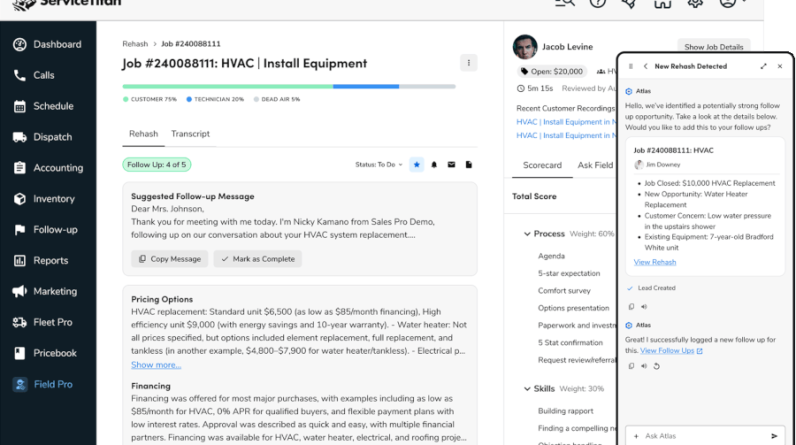Artificial intelligence and related technologies become a transformative power across many industries, and digital marketing is no exception. With frequent updates and new advances introduced almost every month, companies face the challenge of adapting to emerging changes and using them to their advantage. A recent example was the OpenAI presentation in May 2024, which introduced new ways for customers to interact with AI chatbots and services, making other companies rush to design and implement practical applications of these new opportunities to get the edge over competitors.
In such an environment, understanding how exactly AI-based tools function and how they benefit your industry becomes crucial. Andrii Holubenko, a Digital Media Director from Optimum Media OMD Group Ukraine, shared his perspective on the oncoming trends, which will have an impact on the market in 2024 and beyond.
Affecting the Whole Industry
With more than ten years of experience in digital marketing, Andrii Holubenko has seen the industry evolve and change. Projecting the current trends in the future, he notes that the AI-assisted approach is growing in significance. “For many years, the dominating approach could be described as Human-First,” he states. “While various technological solutions could be used to save time and streamline routine tasks, they remain only supplemental to human decision-making.” However, the situation is changing: the current state of AI technology integration into the industry is often described as AI-assisted. AI-based tools have become able to perform more tasks, including loosely defined ones, albeit still with human supervision.
However, businesses need to start preparing for the next step, which is the AI-first approach. The expected timeframes for it vary, with some experts saying it’s already around the corner while others expect that technology level to be achieved within the next 20 years. “While the time estimates may vary,” adds Andrii Holubenko, “the oncoming changes are not subject to doubt.” With the AI-first approach, the application of AI and machine learning technologies will not be limited to lower-level tasks, such as generating advertising content. Autonomous AI agents may become capable of determining strategies, predicting customer behavior, targeting, and running ad campaigns based on vast amounts of data.
Between the Business and the Customer
While digital marketing seeks various ways to grab customers’ attention and keep them engaged, technology changes the way customers interact with brands, becoming an essential part of this interaction. “Hyper-personalization is a vivid example,” notes Andrii Holubenko. “It allows to create content accounting for the very narrow audience segment or even targeting it to an individual customer and their history of interactions with the brand.” The technologies of natural language processing, such as large language models, can breathe new life into old forms of marketing, such as email advertising. Moreover, they also create new forms and methods of interaction, such as chatbot conversations, which will soon become widely available in human-like voiced form and will no longer be limited to text conversations.
There are other technological advances that can transform the customer experience as well. Augmented and blended reality helps to get audiences familiar with the products through visualization tools or to create new types of ad content. Another rapidly expanding field is the usage of computer-generated images in marketing campaigns. “Currently, customers often perceive the usage of AI-generated content as controversial,” comments Andrii Holubenko. “However, when the right way to use it is found, it can boost the efficiency of the marketing campaign, bringing it to a new level.” Taking the differences and characteristics of a local market into account is especially important in this case, as it was proven by the multiple successful digital campaigns, where Andrii has led the launch of international brands and products on the Ukrainian market.
Practical Implementations
While the trends described above may seem futuristic or speculative, these are technologies that can be put to use right now. ‘The growing influence of AI-based tools will affect all segments of the market and all stages of interaction between the business and the customer,” emphasizes Andrii Holubenko. “Establishing the connection between the customer and the brand, leading the customer to the purchase decision, building and supporting the loyal customer base – in each of these fields, there are a lot of tasks which can be performed more efficiently with the help of modern technology.”
One illustration of the fact that there is more than just forecasting and talking about the future is programmatic advertising. Andrii Holubenko possesses a lot of practical experience in the area, as he participated in developing and launching Fusify.io – an advertising platform that creates new opportunities for precise targeting and, consequently, more effective spending on campaigns. He also developed a new method to calculate the audience intersection, which allows businesses to understand their target audience better.
Multiple businesses are currently working on making emerging technologies an integral part of their processes. Many of them were presented at the Cases&Faces Award in June 2024, where Andrii Holubenko participated as a member of the judging panel. “It is always impressive to observe how various businesses, big and small, find ways to use new technological opportunities creatively. I’m sure that at the event, we will see many solutions that seemed hard to imagine even a year ago.”
Spencer Hulse is the Editorial Director at Grit Daily. He is responsible for overseeing other editors and writers, day-to-day operations, and covering breaking news.






